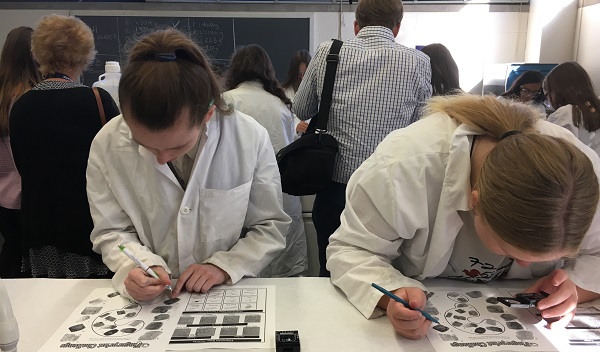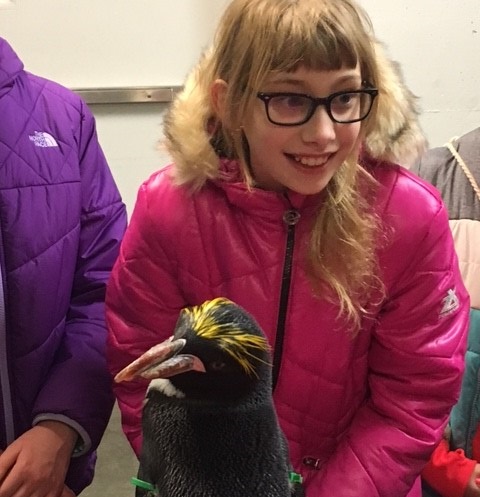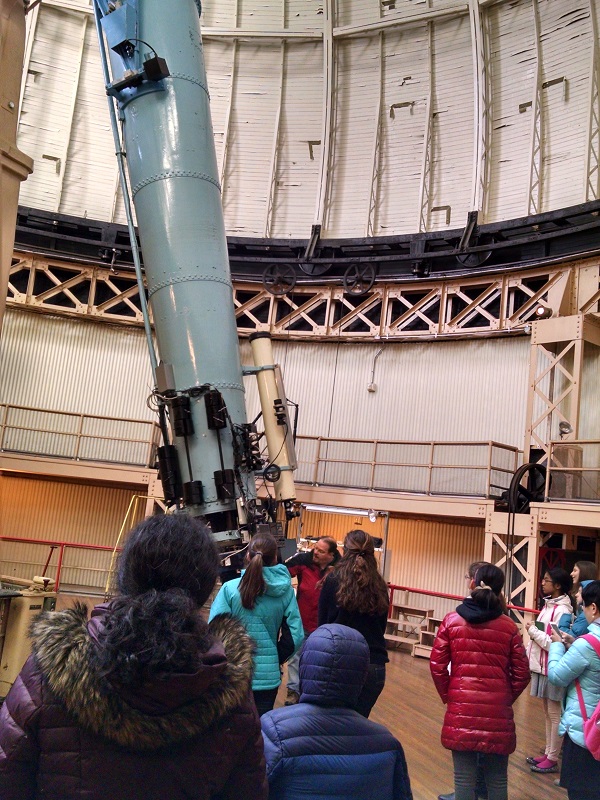
Pittsburgh girls sample STEM careers through Tour Your Future
At the age of 11, Anastasia Davis is already on her way to a successful career.
The 6th-grade student at Blessed Francis Seelos Academy in Wexford hasn’t quite yet narrowed down her chosen profession – not unlike many of her middle school classmates – but she’s busy working on exploring her options as one of Carnegie Science Center’s STEM Girls.
A project of the Carnegie’s Chevron Center for STEM Education and Career Development, this innovative program offers opportunities for girls in middle and high school to get excited about STEM fields – in science, technology, engineering, and math. They participate in special events and after-school activities, plus a comprehensive website with activities, resources and links and its Tour Your Future initiative.
Tour Your Future is a career exploration program where girls ages 11-17 have an opportunity to visit local universities, businesses, and other organizations to meet professional women who have STEM-related careers and see first-hand the type of work they do. Typical visits include a guided tour of the host site’s facility, a question-and-answer session, and a fun, hands-on activity related to the job field.
Anastasia’s mom, Marcy Davis, encouraged her daughter to participate in Tour Your Future so she could see a lot of career opportunities that are available to her.
“The ladies who meet with them can explain the interesting parts of their jobs and show how their high school and college choices got them there,” Marcy says. “These viewpoints are valuable.”
Tina Seidelson, Carnegie STEM Girls program manager, believes that Carnegie STEM Girls plays an essential role in encouraging more interest in STEM fields.
“Despite comprising half of the overall workforce, women hold only 25 percent of science and technology-related jobs in the U.S.,” she says. “This program was initially designed to reverse that trend.”
Through the Tour Your Future site visits, girls not only find job prospects they’d like to explore more – they can weed out the fields in which they’re not at all interested.
“After the tours, some girls will say this was so awesome, and this is what they want to be, and others will say ‘I know this isn’t for me.’ It’s beneficial either way,” Seidelson says.
Girls can sign up for one or several tours, which typically last about two hours.

Anastasia, who is particularly interested in zoology, participated in four tours, learning about ecosystems at Phipps Conservatory and Botanical Gardens and animal habitats at the Pittsburgh Zoo & PPG Aquarium. Other fields were explored at Kennametal and BoXZY, a company that manufactures 3D printers for a variety of industries.
The nursing profession is another direction offered, led by Jan Barber, patient manager/facilitator at Robert Morris University’s Regional Research and Innovation in Simulation Education (RISE) Center.
Kids review CPR skills, learn how to take blood pressure readings and work in an actual scenario with a full-size human high-tech mannequin alongside a simulation instructor who is a registered nurse. Students interested in technology may spend time in the control room and help to make the mannequin breathe, blink and talk during the scenario.
“Tour Your Future participants get to engage in a realistic learning environment where the learner and the ‘patient’ are safe,” Barber says. “Participants get to experiment and play a bit while getting a realistic look into the world of healthcare.”
At Duquesne University’s School of Pharmacy, Tour Your Future participants compound an ointment, observe how the administration of medication can alter the heart rate and respiration of a simulated patient replica, and participate in a mock emergency room scenario that requires pharmacist intervention.

Dr. Sandhya Rao, an astronomer and research professor in the University of Pittsburgh’s Department of Physics and Astronomy, has been involved with Tour Your Future and Girls Rock Science events for the past three years.
“I think that it is absolutely essential for middle and high school girls to be made aware of the fact that there are successful, professional women in all fields,” she says. “They need examples and role models so that no line of work is assumed to be off-limits, or too difficult, or ‘not cool.’
Barber agrees.
“We ask young people to choose a career path at a relatively young age,” Barber says. “Many students begin life in college not having direction. Tour Your Future can create excitement and interest in STEM to help guide their future decisions by highlighting an interest.”